In this section, you will find the basic knowledge about climate change.
The most important definitions
Weather
Weather refers to local atmospheric conditions that occur over short periods of time (e.g., it’s raining, snowing in a specific place and time).
Climate
Climate refers to the long-term average weather patterns (temperature, precipitation, and wind expected in a region).
Global Warming
Global warming is the long-term heating of Earth’s climate system observed since the pre-industrial period (between 1850 and 1900).
Climate Change
Climate change is the long-term change in the average weather patterns over decades*.
*The United Nations Framework Convention on Climate Change (UNFCCC), in its Article 1, defines climate change as “a change of climate which is attributed directly or indirectly to human activity that alters the composition of the global atmosphere and which is in addition to natural climate variability observed over comparable time periods.”
Our planet is warming
Planet Earth is warming, and we know it because we are observing (measuring) the increase of Earth’s global surface temperature.
Global Temperature in 1884
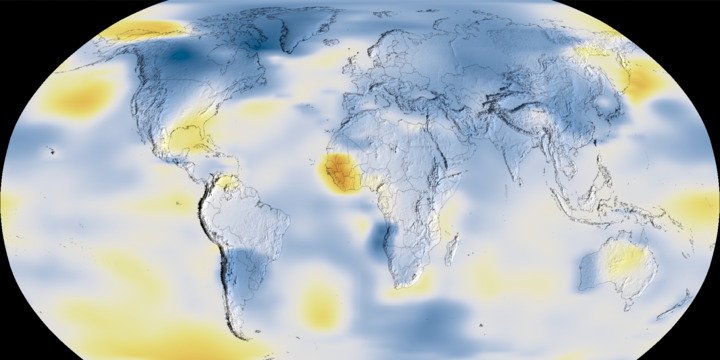
Data source: NASA/GISS Credit: NASA’s Scientific Visualization Studio
Global Temperature in 1971
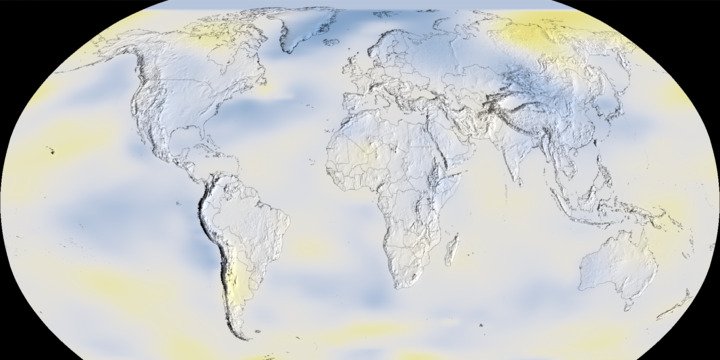
Global Temperature in 2022
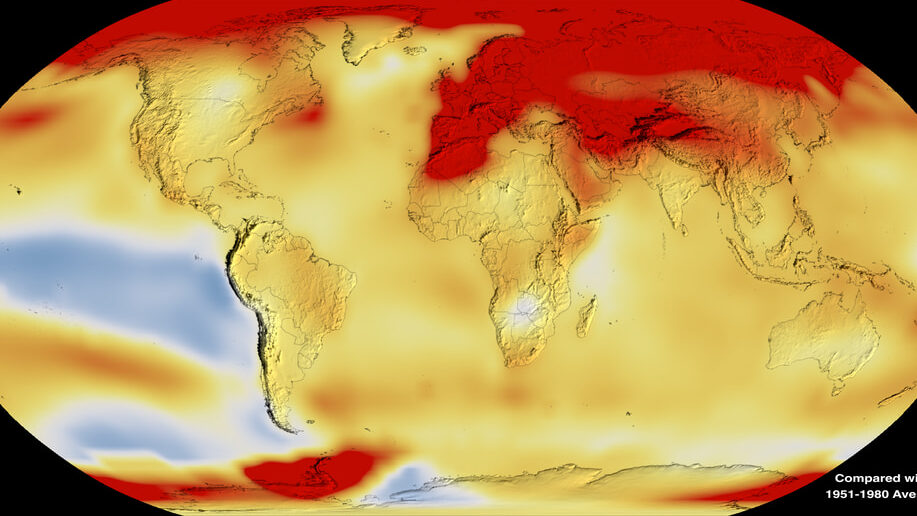
Earth’s current global temperature: a new record set in 2023
The latest data from Berkeley Earth’s Global Temperature Report show that in 2023, the global mean temperature of our planet has been 1.54°C warmer than it was in the pre-industrial period (1850-1900).
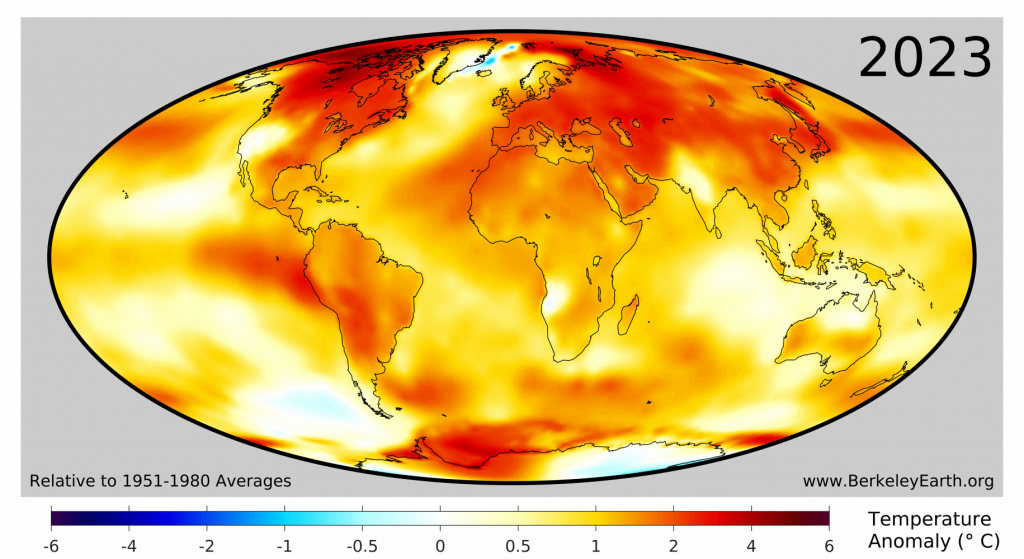
“This is the first time that any year has exceeded the key 1.5 °C (2.7 °F) threshold. The significance of this is discussed below. Also, please note that given the uncertainties and differences in methodologies, other groups are expected to report 2023 as slightly less than 1.5 °C above preindustrial.”
The last nine years have been the warmest years recorded.
Why our planet is warming

Our planet is surrounded by the atmosphere, a thin layer of gases vital to life on Earth. This thin layer of heat-trapping gases (known as greenhouse gases, GHGs, e.g., carbon dioxide, CO2 and methane, CH4) is like a blanket wrapped around Earth that keeps the planet warm.
The natural greenhouse effect
When the sun’s radiation reaches the Earth, some of it is reflected into space; some is absorbed by the atmosphere, and the rest is absorbed by lands and oceans, heating our planet. This energy (heat from the Earth) re-radiates from Earth to space, and some of it is trapped by the greenhouse gases in the atmosphere. It is the natural greenhouse effect, and it keeps the Earth warm.
Without the greenhouse effect, the Earth’s surface would be some 33°C cooler, meaning that we would have an average temperature of –(minus) 18 °C – hard to imagine our current ways of life at minus 18!
The additional extra heat is warming our planet
The increased level of greenhouse gases in our atmosphere due to human activities, with carbon dioxide leading, amplifies Earth’s natural greenhouse effect resulting in extra heat that is causing the Earth’s temperature to rise (this is the additional greenhouse effect due to human activities).
The anthropogenic(man-made) GHGs
When we talk about greenhouse gases, we refer mainly to carbon dioxide (CO2), methane (CH4), nitrous oxide, and chloro/fluorocarbons that we add to the atmosphere because of human activities (anthropogenic emissions). We know that the more we add GHGs to the atmosphere (due to our activities) the more we cause additional warming. Let’s see which gas/es.
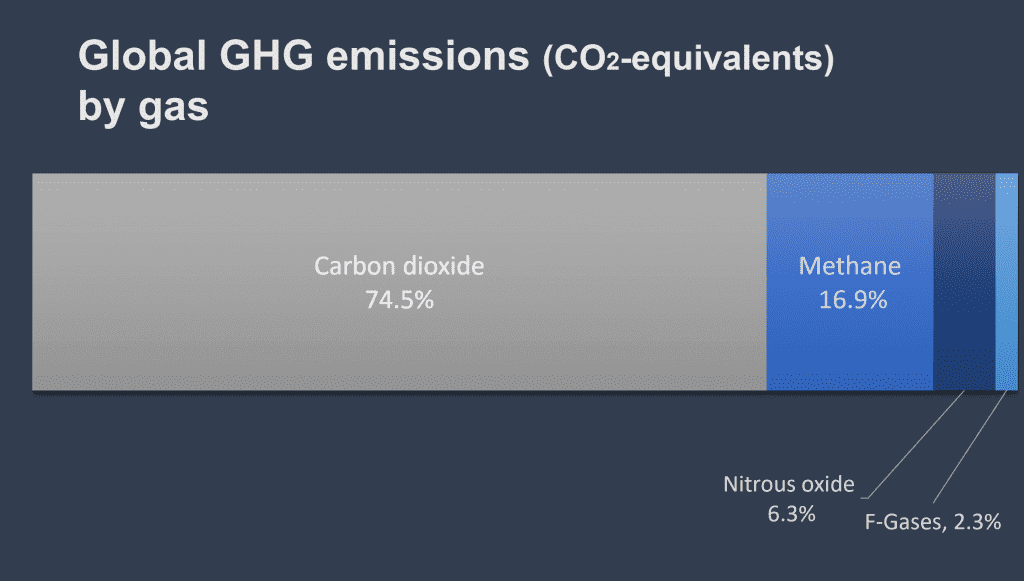
In 2018, we emitted a total of 48.9 billion tCO2eq. Carbon dioxide (CO2) is the main contributor of global greenhouse gases emissions with 74.5%, followed by methane (CH4) 16.9%, nitrous oxide (N2O) 6.3%, and F-gases 2.3%
Where do the GHGs come from?
The energy sector is the biggest source of anthropogenic greenhouse gas emissions, responsible for 76% of the global GHG emissions. Agriculture accounts for 12%; Industrial processes 6% (that is, the CO2 produced as a byproduct in industrial processes, not from the energy used); waste about 3%, and land-use change and forestry another 3%.
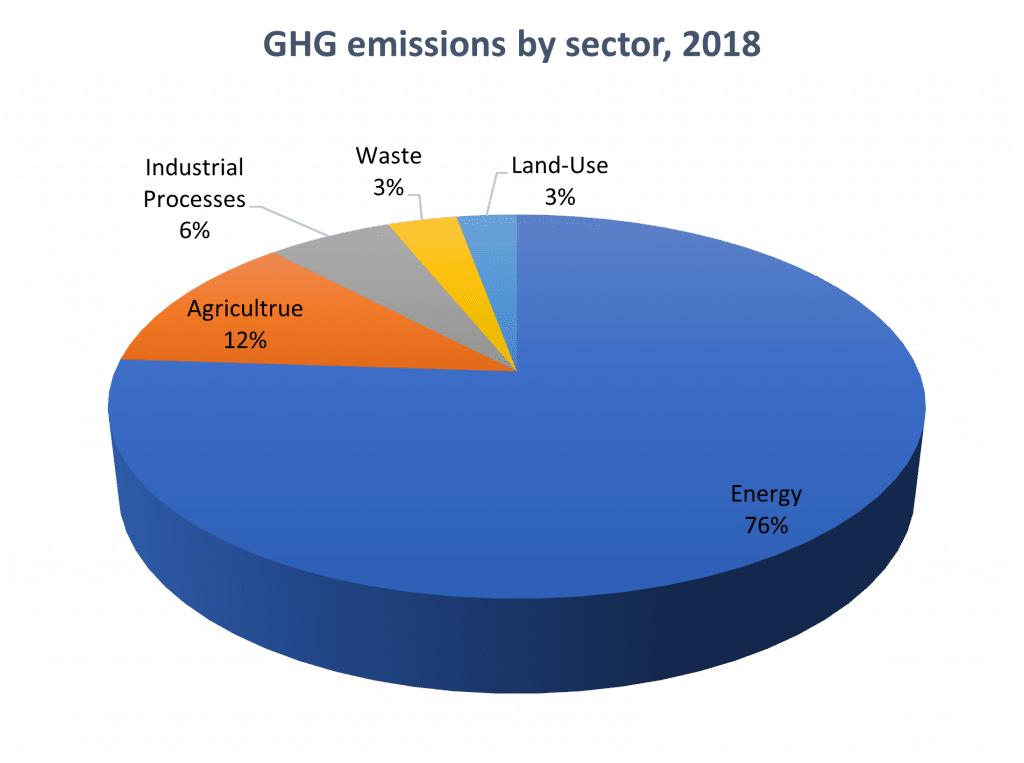
The rapid rise of carbon dioxide levels in our atmosphere
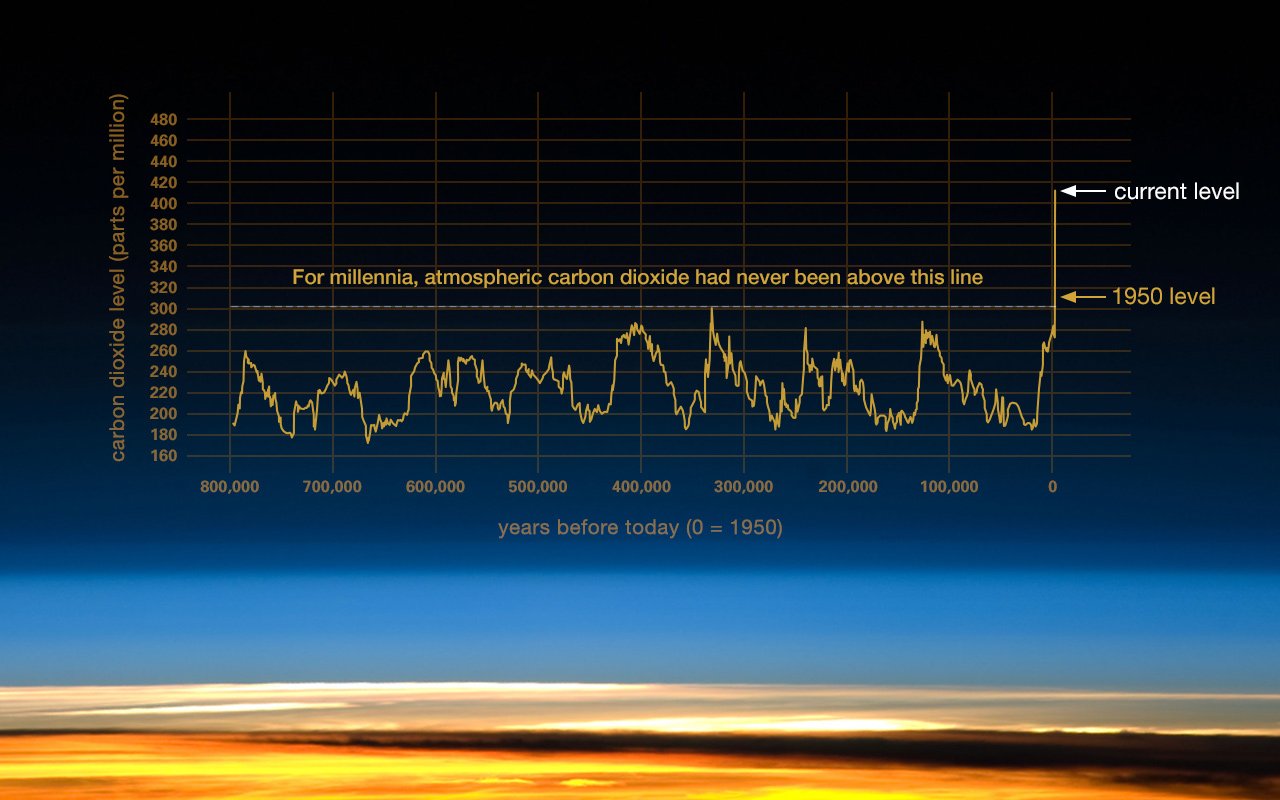
For millennia -a very long time!, and well before human civilization, carbon dioxide levels in the atmosphere have been stable, ranging between 200 and 280 parts per million (ppm).
.
.
.
.
.
.
The problem? Since the Industrial Revolution, human activities (e.g., burning of fossil fuels and deforestation) have increased the amount of carbon dioxide (CO2) in that thin layer of gases (that is, the atmosphere) much more rapidly than in the past. Today, the amount of CO2 in the atmosphere is around 417 ppm.
Source & more: Nasa. Credit: Luthi, D., et al.. 2008; Etheridge, D.M., et al. 2010; Vostok ice core data/J.R. Petit et al.; NOAA Mauna Loa CO2 record.
The rapid increase in population
And here is the increase in population with the 1950s population and current population indicated. The graph goes back 10,000 years, when we were just a few million on Earth – a time when we would invent agriculture. It’s the Holocene epoch (the geological period started around 12,000 years ago), where temperature varies just +/-1 degree Celsius – a stable temperature that allowed modern human development.
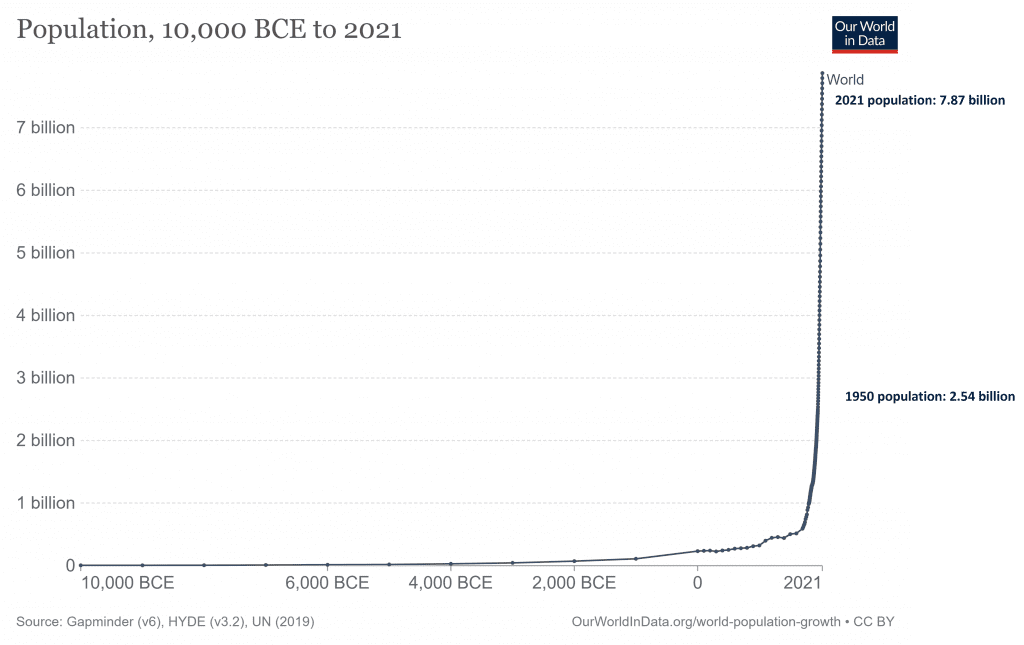
Why do we produce so much carbon dioxide?
The majority of CO2 comes mainly from the burning of fossil fuels that we use e.g., to produce the energy we need for our residential & commercial properties, to go around with our cars, move things around & fly (transportation), from industrial processes and land-use change and forestry. Let’s explore some data.
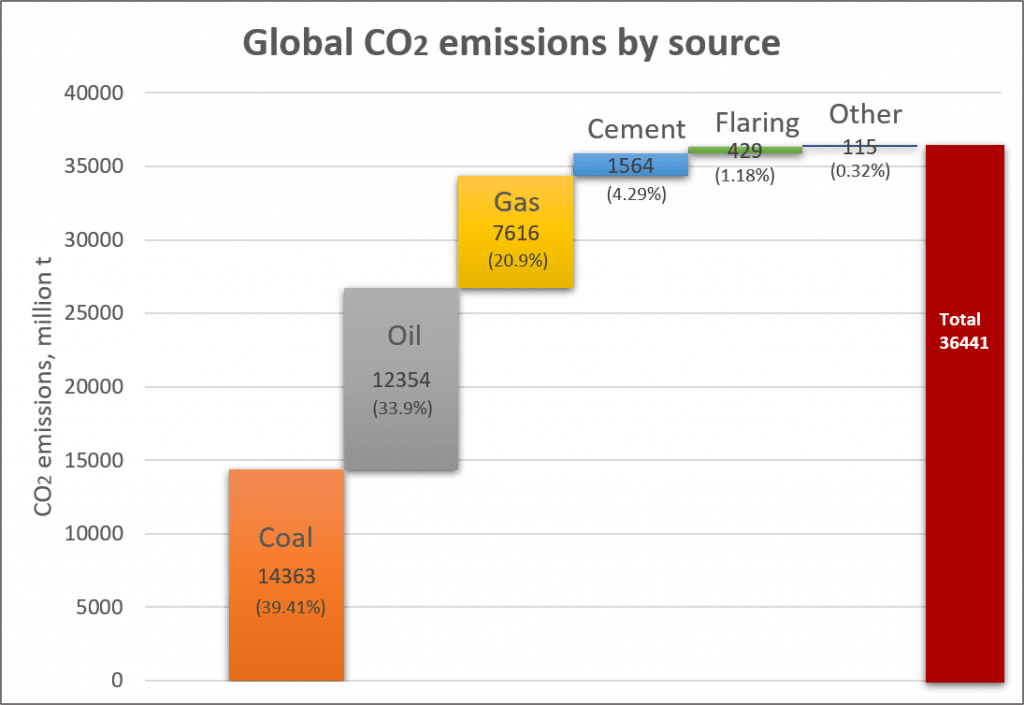
A total of 36.44 billion tCO2 in 2019 (36.42 in 2018) came from the burning of fossil fuels and cement production.
The majority of CO2 emissions came from burning coal (39.41%), oil (33.90%), and gas (20.9%). Emissions from cement production were 1.5 billion tCO2 (4.29%), and flaring 1.18%.
We are in a climate emergency
The need for energy will only increase in the future, driven by developing economies (and so will the related emissions). The need for food will increase. Earth has experienced climate change in the past without help from humanity, with periods even warmer than today (in the Eemian, about 130,000 years ago – when sea levels were 4/6 meters higher than today). The problem is that the current warming is occurring much more rapidly than past warming events -and this time, we are inhabitants on the planet, adding massive amounts of greenhouse gases.
We are causing important changes on this planet, continuing with an unsustainable development that is increasing the pressure on Earth and leaving many people behind.
We need to decide if we want to make choices compatible with a sustainable pathway or not. In other words, we need to decide if we want to operate within the safe space of the planetary boundaries and co-creating a better future for all.
It’s our responsibility to take action and do our best to leave a liveable planet for our kids and future generations.
